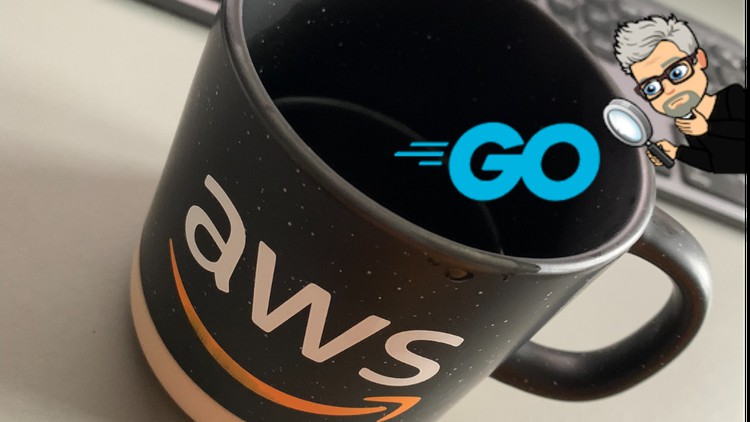
Learn the GO (golang) programming language to create serverless and other architectures on AWS (Amazon Web Services)
What you will learn
Coding in GOlang
Using GO for AWS serverless projects
Doing Infrastructure as Code with GO on AWS
Using Test Driven Devolpment for GO applications and AWS infrastructure
Description
AWS supports many programming languages with SDKs. GO is a powerful language, but what is lacking is a complete reference not only for writing applications, such as AWS Lamba Functions, but also for Infrastructure as Code. Starting with basic programming knowledge, you get expert tips from real-world projects on how to build fast, secure and cost-effective applications with GO on AWS.
The course is written for students with basic AWS knowledge and experience in at least one other programming language like python or javascript.
We begin with GO fundamentals with many hints for a student from other languages. Building on that knowledge, we discover the possibilities of the AWS SDK – the software development kit. How to call services on a basic and more abstract level.
To build projects on AWS, you also need infrastructure like a storage bucket or a Lambda function. Modern infrastructure is built with IaC – infrastructure as code. We explore the AWS CDK – the cloud development kit. With GO, you gain speed an another level of type safety.
Having created some resources, we dive into the world of serverless. GO is one of the best languages for serverless programming because of the speed and the go compatibility promise. With python or javascript, you have to update often because of new runtime versions. Not with GO!
Now that we have learned all the building blocks, it’s time to look at more complex architectures. We discuss container and serverless applications, and both build with GO.
The chapter about different types of the automated test give you insights into building applications with high programming quality.
All that is waiting for you, so let`s GO!
Content
Introduction to GO on AWS
GO – the language
Basic Data Types
Advanced Data Types
Complex Data Types
Modules
Functions
Control Flow
The AWS GO SDK Version 2
Simple Service Examples with the GO SDK V2
S3 – handling storage with GO
DynamoDB
STS – Secure Token Service
AWS Infrastructure in GO
AWS Lambda in GO
Testing GO on AWS
Test Pyramid
Tools
Wrap-Up